

We may earn revenue from the products available on this page and participate in affiliate programs. Learn More ›
There are few experiences better than a sunny evening of relaxing or entertaining on a backyard deck. As a result, deck building is a hugely popular DIY project that can be accomplished with relatively modest skills, knowledge of local building codes, and tools that many homeowners already possess.
Aside from overall deck size and other design considerations, the big question for many is whether to use composite decking or real wood decking. With so many types of composite and wood available, choosing the best decking material can seem complicated.
Key considerations of the composite vs. wood deck debate include materials, price, maintenance, and sustainability—all of which should provide homeowners with the information they need to choose the best decking option for their needs.
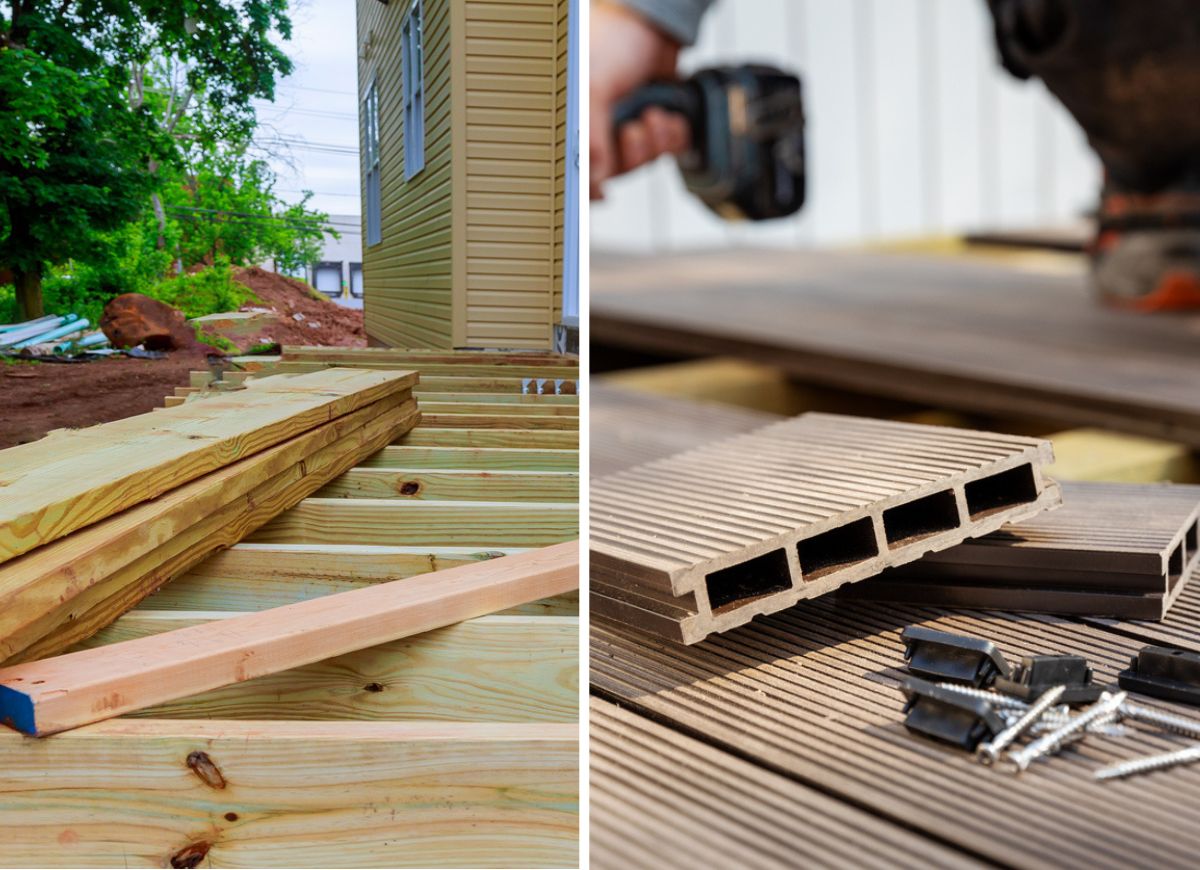
Solid wood is a natural material whereas composite decking is man-made.
For many, there is an undeniable attraction to the appearance and feel of a real wood deck. It’s a natural product that can be sustainably produced, it helps the capture carbon as it grows, and it adds beauty to our homes when responsibly forested.
Mention synthetic decking, and a common first thought is that they’re all made from plastics. While mostly true, composite deck boards come in a range of different materials that offer various benefits, and this can have a major impact on choice. To make an informed decision, take a closer look at the various alternatives to wooden decking currently available.
Wood Plastic Composite
Wood plastic composite (WPC) uses natural fibers from wood pulp, bamboo, bark, or nut hulls combined with plastic powder (usually polyethylene or polypropylene). This lumber composite often has good environmental credentials because the natural fibers can come from waste materials. Additionally WPC deck boards can be broken down and recycled into new WPC products after their useful life is over.
Wood plastic composite is easy to color during production and can be painted after installation. It can even be sawed, drilled, nailed, or screwed much like natural lumber. Unfortunately, its fiber content means it’s not always as weather-resistant as other types of non-wood decking.
Cellular PVC
Cellular PVC is an increasingly popular fake wood for decks. Made from polyvinyl chloride (PVC) with a dense honeycomb structure, it has the resistance to water, rot, and insects associated with plastic, but unlike most plastics, it can be painted if desired.
During manufacture, cellular PVC decking boards often have a grain pattern added. It also has similar properties to lumber when worked. Although PVC is not organic, its molecular weight is more than 50 percent salt, and it’s more environmentally friendly than petrochemical-based plastics.
Mineral-Based Composite
The big advantage of mineral-based composite (MBC) decking is its strength and stability. It does not stretch or warp, and it is impervious to water and insect attack. This composite decking material can also be colored or textured to replicate wood effects.
It’s made from a combination of plastics and minerals that are heated and extruded (molded under pressure) to form boards. While extremely durable, it is completely inorganic and may be the least environmentally-friendly decking material.
Note: Composite decking is often fire-resistant, and some people assume they are therefore safe for fire pits. This is not the case. While it may be possible to use some models, the extreme heat means this is not normally recommended for either wood or composite decking.
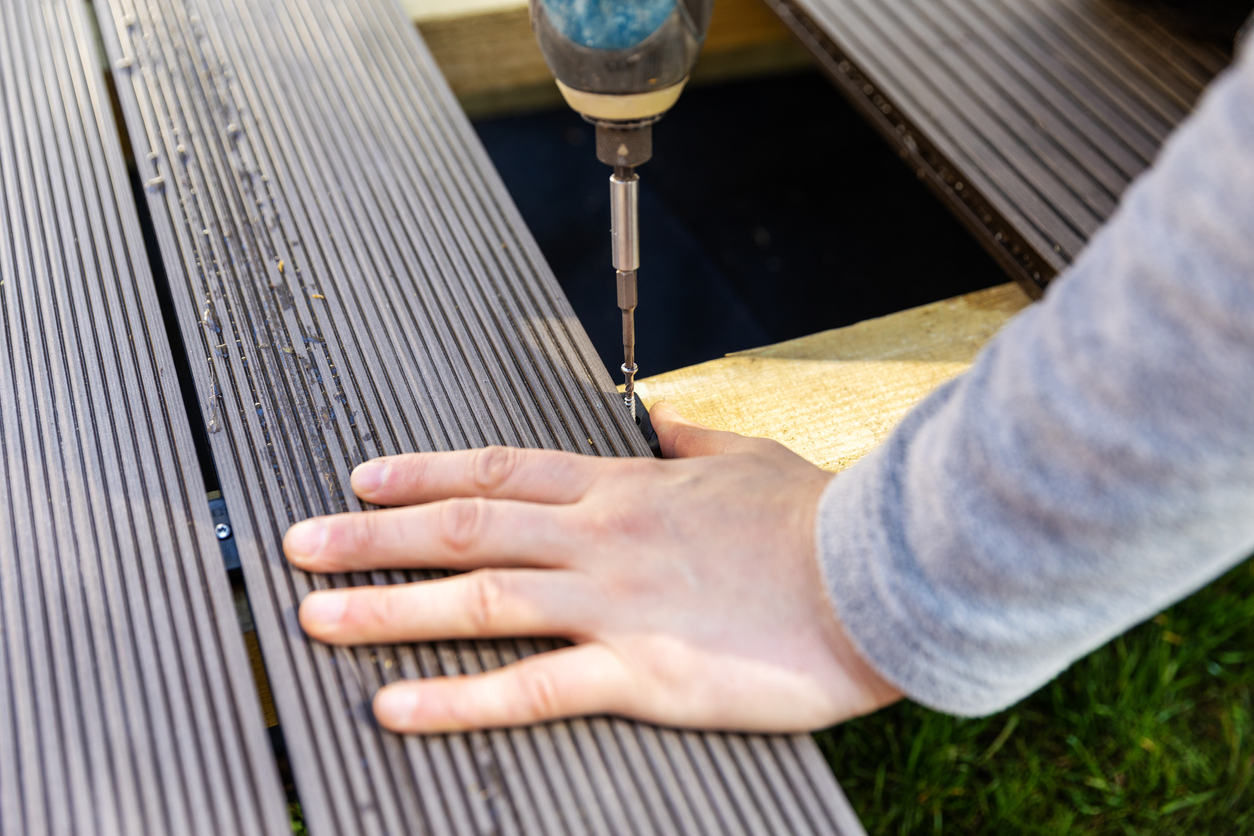
Wooden decks generally cost less to build than those made with composite decking boards.
The notion that wood decking is cheaper than composite is common, but it can be slightly misleading. Lumber prices have recently been up to three times higher than pre-pandemic prices and remain volatile, while composite decking prices are relatively stable.
As of 2022, the cost of building a deck using store-bought pine was around $15 to $20 per square foot, whereas a composite deck costs more like $30 to $40 per square foot. However, species like cedar and redwood are more expensive than pine, as are popular exotics like ipe and cumaru, both of which are imported.
Composite deck installation costs can be higher, since many types require more blocking and other details. Another important consideration is the lifespan of the product. Composite decking tends to last longer than natural wood, which should be factored into overall costs.
Composite deck boards require far less maintenance than wood decking.
In general, composite decking requires less care than wood, which needs coating with deck sealer every 2 or 3 years. While composite decking is usually easier to look after, it is not maintenance-free.
For example, wood plastic composite can be bought as capped or uncapped (in other words, either with or without a plastic coating). Uncapped WPC boards feel more like natural wood but are prone to staining and mold. Mildew can accumulate on all types of composite boards and, although it may not do any damage, it certainly looks unsightly.
Day-to-day use can also result in scratches, dents, and other damage in composite deck boards, similar to wood. While various methods can be used to make repairs, even the best composite decking needs some care and attention to maintain its appearance.
RELATED: The Dos and Don’ts of Deck Maintenance
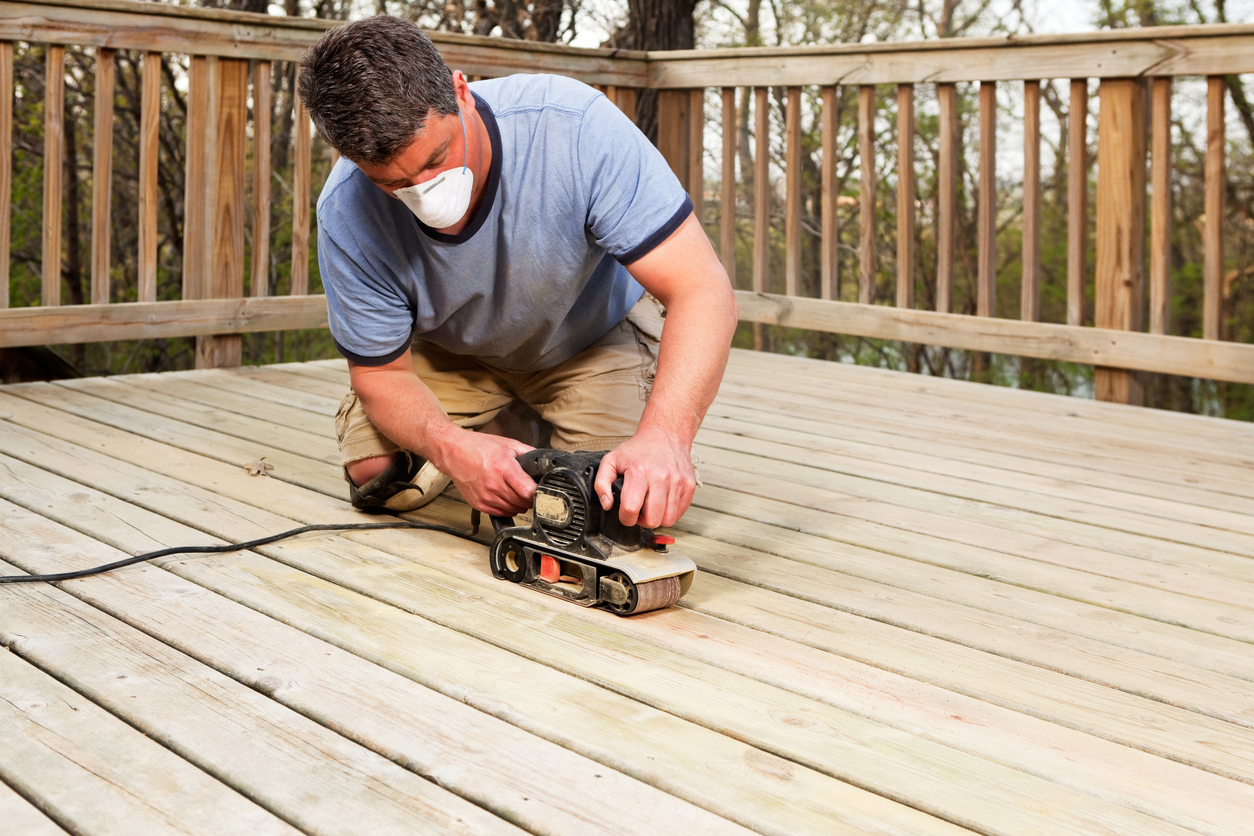
Wood doesn’t last as long as composite decking materials.
Wood decking will last 10 to 20 years, and composite decks last about 25 to 30 years (though some MBC can last up to 50 years). So even with regular maintenance, wood decks do not last as long as composite. However, there are a number of things that buyers can do to improve longevity.
- Don’t buy plain white pine. Look for pressure-treated lumber that has been injected with preservative to help prevent rot, mold, and insect damage.
- Consider cedar or redwood. These homegrown woods are more expensive but have natural resistance to weather and bugs, and many consider them more attractive.
- Cumaru, ipe, and mahogany also have improved durability. However, these species are imported and can cost significantly more than domestic woods.
There’s no escaping the fact that wood needs more care than composite decking. However, the natural feel and appearance is worth the extra effort for many.
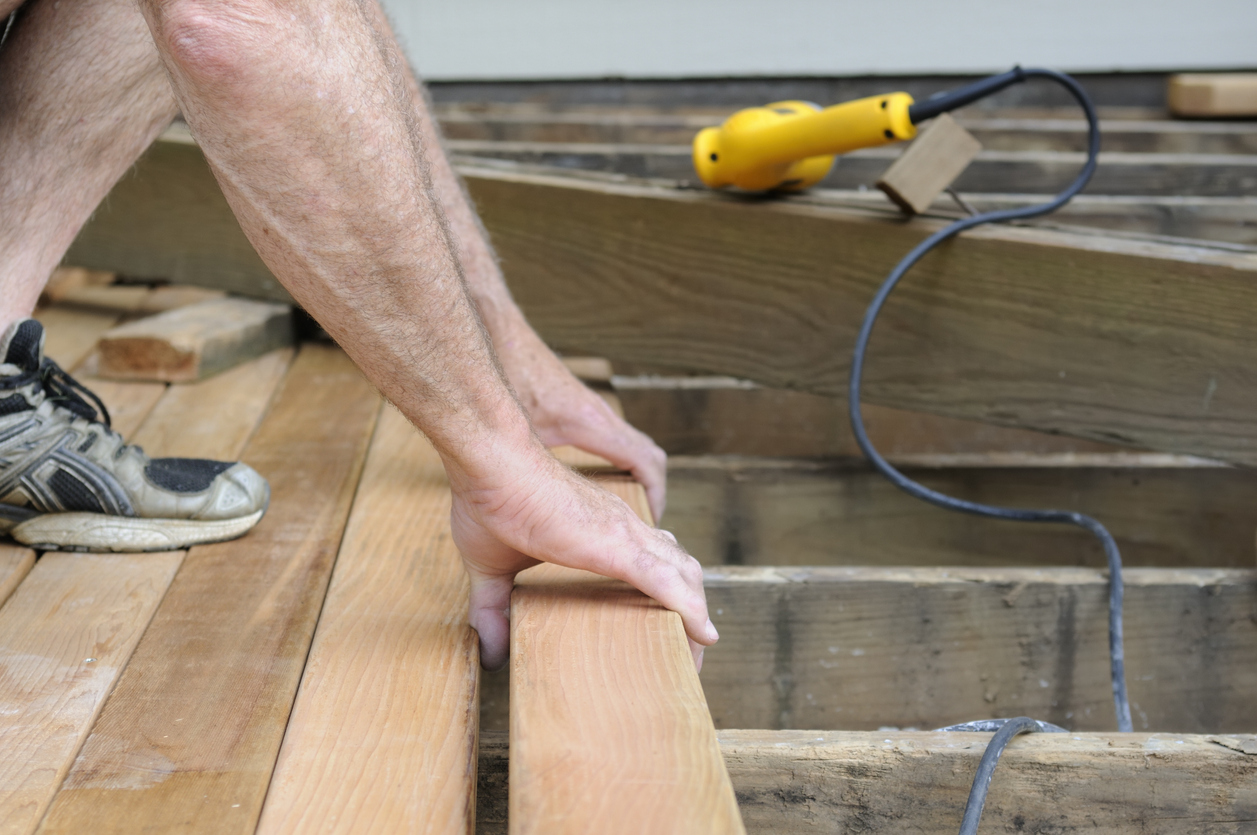
All deck materials get hot in the sun, but composite often retains more heat than traditional wood.
There are two common safety concerns associated with composite decking: It can get too hot in the summer, and it can be slippery when wet.
On sunny days, it’s reported that plastic decking can reach temperatures up to 150 degrees Fahrenheit—more than enough to burn bare feet. This may be true of some composite decks, but certainly not all.
- The natural fibers in WPC means it behaves much like wood, seldom getting particularly hot or cold.
- Cellular PVC is perhaps the most prone to overheating, though some brands claim their product is no worse than natural decking.
- One leading manufacturer of MBC decking says its product actually stays cooler than wood.
Some composite decking can also become very slippery when wet. Textured surfaces can help, and nonslip coatings are available. Varnished wood can be equally tricky, so choice of finish for either deck material is important. Many modern sealers protect without altering the grain, allowing the surface to retain its natural grip. For composite and wood alike, it’s important to check performance before ordering.
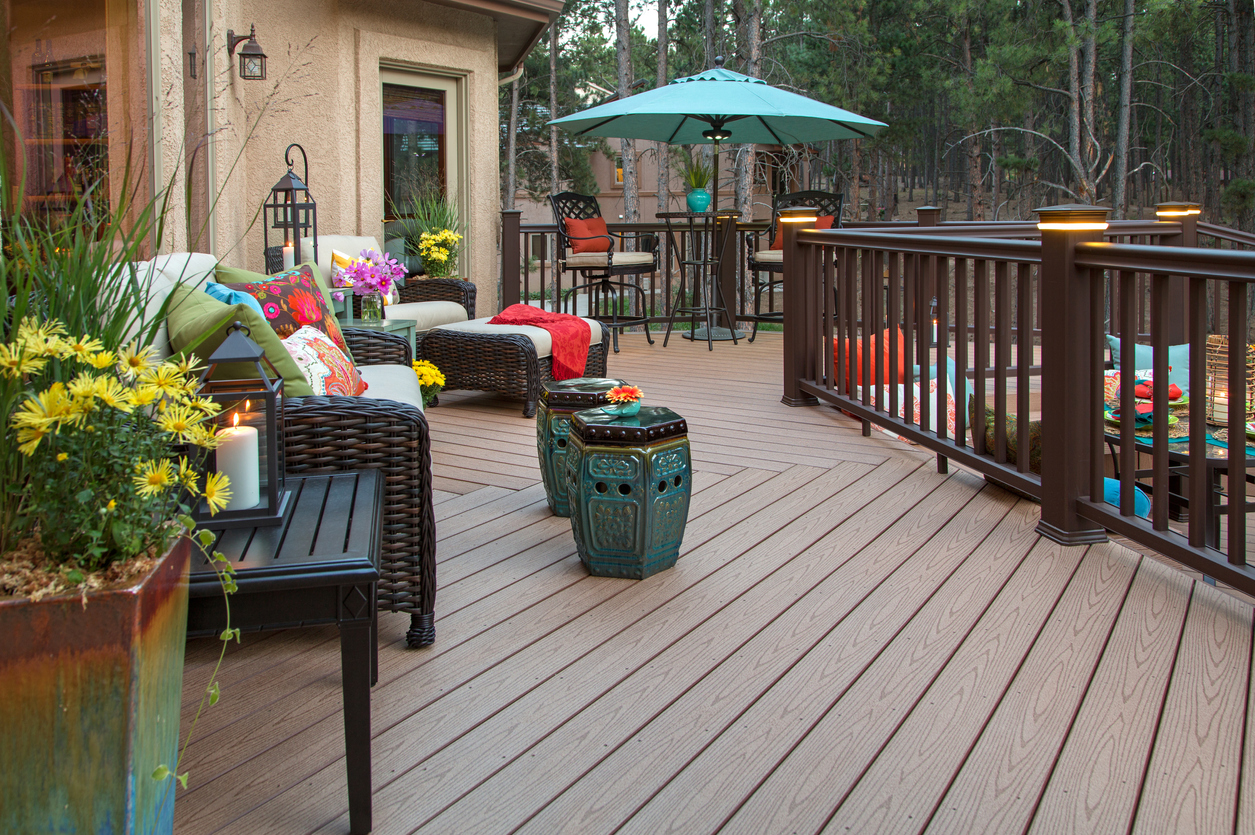
The jury is still out on which decking option is more sustainable.
Wood is a natural, sustainable product, so it’s understandable to assume that wooden decking is the more environmentally-friendly choice. Most of the time that may be true, but not always.
For instance, the chemicals used to pressure treat lumber can often be toxic. While pine, cedar, and redwood are usually homegrown, cumaru and ipe may be illegally logged from South American rainforests. A lot of mahogany travels all the way from India or Malaysia. The Forestry Stewardship Council (FSC) certifies sustainable production worldwide, and its certification is something to look out for when buying timber decking—but it’s only a voluntary standard.
On the flip side, the idea that all composites are more environmentally harmful than wood is equally flawed. While some are made with petroleum-based chemicals, brands like Trex and Fiberon are keen to point out the high percentage of recycled materials in their products and their commitment to more sustainable manufacturing processes.
There are few simple answers to questions about sustainability in deck materials. Greenwashing (unverifiable claims of eco-friendly practices) remains a problem. Some products made from recycled products can’t actually be recycled themselves. Some release toxic dust when sawed or drilled. To be fair, it is also clear that some brands are committed to green initiatives. While these are to be applauded, there are currently no recognized eco-standards for composite decking, so it is up to buyers to conduct their own research when deciding between building a composite or wooden deck.
